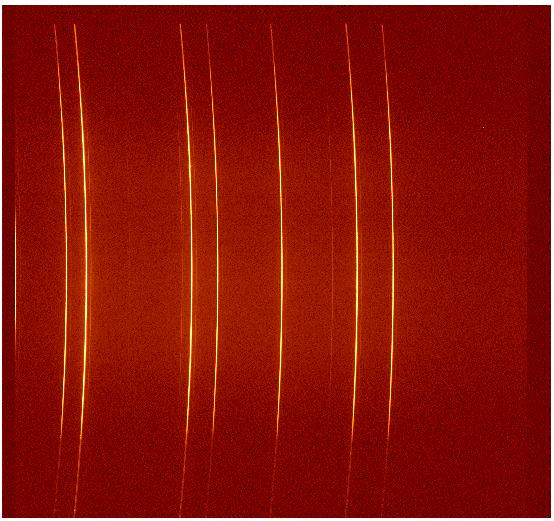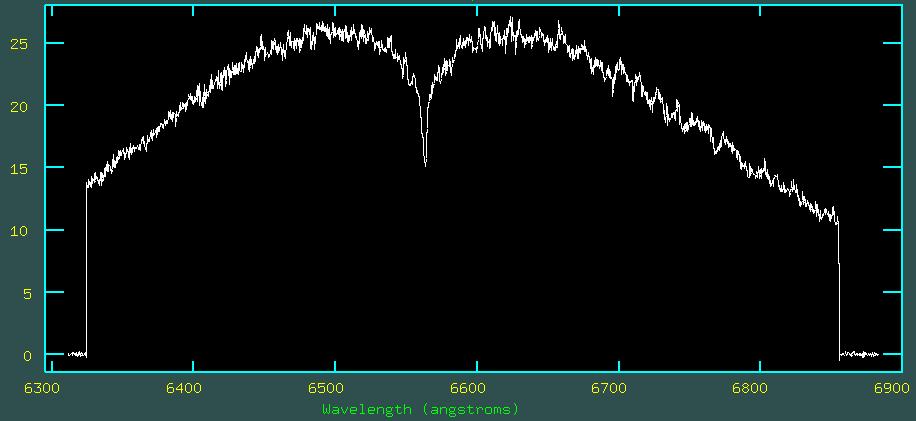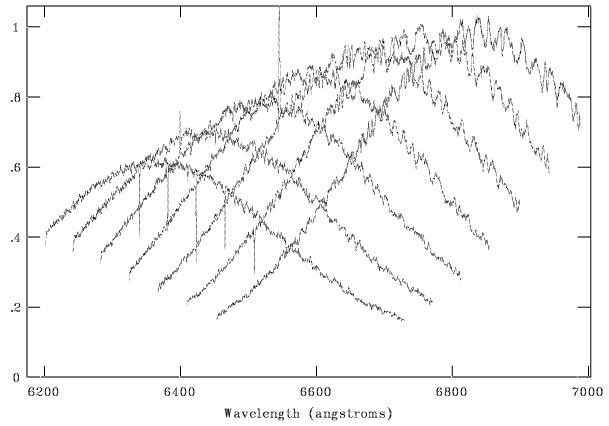
ALFOSC grism #17As of September 2005 we have a new grism available for ALFOSC. The grism was designed by Michael Andersen (AI Potsdam), with the aim of doing medium-resolution lithium studies in brown dwarfs, in the spectral region around H_alpha (approx 6350-6850 Angstrom).The resolution of the grism is highest of all ALFOSC grisms (including the Echelle grisms), and results in R=10000 for a 0.5 arcsec slit (2.5 detector pixels), with a corresponding dispersion of 0.254 Angstrom/pixel. Due to the VPH technology used the grism has very high efficiency, with the highest peak efficiency of all ALFOSC grisms. The grism is mounted in a special holder designed and made by Dennis Wistisen at Copenhagen University. The grism can only be mounted to give the dispersion along the rows of the CCD, and can hence only be used with our set of 'vertical' slits.
A drawing of the grism , and another .
Design parameters
On-sky efficiencyThe throughput of the grism was measured using wide-slit (10 arcsec) standard star observations. The peak system efficiency, including atmosphere, telescope, instrument and detector, is well above 30%, but falls down quite steeply away from the central wavelength. A plot of the system efficiency for grism #17.We do not yet have this new grism added to our Exposure Time Calculator. Given the efficiencies of grism #8 and grism#17, one will get about 20% more counts/Angstrom for grism#17 with a dispersion (A/pix) that is 5 times smaller. See the example spectrum below for counts/pixel/second for a standard star. GhostA ghost is seen in flatfield images taken with any of the halogen lamps. The ghost appears in flats as a near-vertical streak at the 1-2% level, that crosses the object spectrum position in the middle of the CCD. In the object spectra the ghost is sufficiently far away from the object. The X position of the ghost can be tuned by slightly changing the slit position, but this will also affect the sampled wavelength range (see below) and the alignment of the slit.DistortionArc lines are heavily curved, and care should be taking when aligning the slits. Below a full frame Neon spectrum (see arc maps). Tuning the wavelength range and peak efficiencyIn principle, the VPH grism allows the wavelength at which the peak efficiency appears to be changed. This can be done by using offset slits, and this will also change the wavelength region that is sampled on the CCD. Currently we have the following vertical offset slits.
We investigated this VPH feature using a pinhole rather than a slit.
The pinhole was moved in steps of 2000 aperture wheel units.
One can see that for a given wavelength the optimal grism efficiency can be tuned
by choosing the best pinhole position. FringesAs one can see in the above plot, fringing starts around 6400 Angstrom, and reaches 10% peak-to-peak levels at 6800 Angstrom. This is a feature of CCD#8.Example spectrumIn September 2005 the grism saw first starlight. An example spectrum showing one of the first science frames taken with this grism, of the spectral flux standard SP0644+375 (He 3, V=12.0, spectral type DA), showing counts/second in the extracted spectrum (dispersion 0.26 Angstrom/pixel). |
||||||||||||
|
